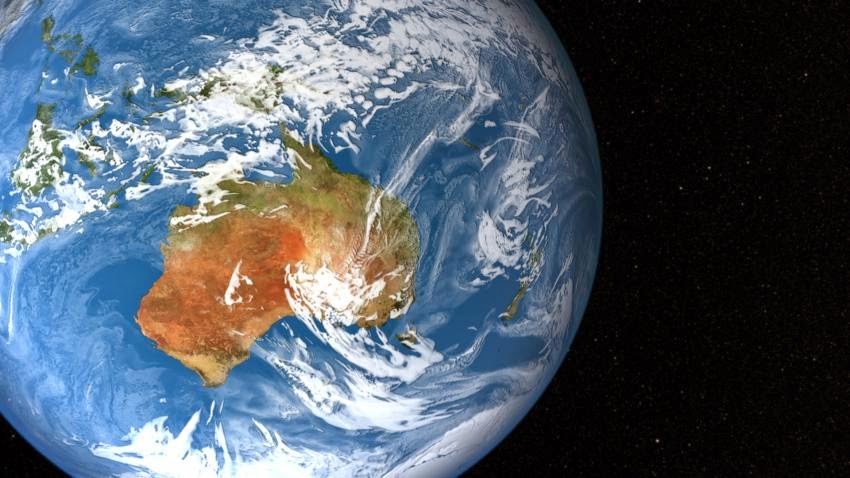
It is likely that most of the large impact craters on Earth have already been discovered and that others have been erased, according to a new calculation by a pair of Purdue University graduate students.
“Over the past 3.5 billion years it is thought that more than 80 asteroids similar in size to, or larger than, the one which killed the dinosaurs have struck the Earth, leaving behind craters which are over 100 kilometers across, but our model suggests only about eight of these massive craters could still exist today,” said Timothy Bowling, a graduate student in Purdue’s Department of Earth, Atmospheric and Planetary Sciences. “Geologists have already found six or seven such craters, so odds are not in the favor of those hoping to find the next big crater.”
The movement of the Earth’s tectonic plates and other geologic processes erase craters over time, he said.
“Impact craters dominate the surface of other planets and bodies in our solar system, like the famously pockmarked moon and Mercury, but the Earth looks different,” Bowling said. “The Earth’s crust is very dynamic and active, and over time it pushes and pulls these craters deep below the surface, until eventually they are sunk into the Earth’s mantle and disappear.”
Although it is known that natural processes erase craters fairly quickly from the Earth’s surface, this model was the first to quantify how many craters have likely been erased, he said.
Brandon Johnson, a postdoctoral researcher at the Massachusetts Institute of Technology who at the time was a graduate student at Purdue, led the study, which is to be published in the journal Geology. Both Bowling and Johnson worked under Jay Melosh, a Purdue distinguished professor of earth, atmospheric and planetary sciences and physics. A NASA planetary geology and geophysics grant funded this research.
Bowling and Johnson used the age of the Earth’s terrestrial and oceanic crusts and three different scenarios of Earth’s bombardment history to determine the maximum probability that a crater made a given number of years ago would still exist today. They then estimated the percentage of craters that could persist and be observed today for each of the bombardment scenarios.
The model’s ability to estimate the percentage of large craters that would survive to present day could be useful in supporting or refuting different theories of the ratio of large to small impacts, called the size frequency distribution, Bowling said.
“The number of smaller impacts that would have likely occurred for every large impact we find is a looming question in the field,” he said. “Existing theories are mostly based on studies of craters on the surfaces of other bodies, like the moon. No one had attempted this before using the Earth’s crater record because it couldn’t be done without having an idea of how many craters have been erased. This model could be used to help confirm or refute proposed theories.”
While the model could be applied to studies of the size frequency distribution, it cannot be used to distinguish between different models of the rate at which large objects hit Earth, he said. These models vary from those that expect constant bombardment to those that predict that earlier time periods were responsible for a greater number of impacts.
An ability to accurately determine the date of impact is needed to distinguish between different proposed bombardment scenarios, Bowling said.
Instead of hunting for craters, scientists should search for layers of debris ejected on impact to better understand the Earth’s bombardment history, Bowling said.
When asteroids larger than about 10 kilometers, or six miles, in diameter crash into the Earth a plume of vaporized rock rises into space. Small droplets of this plume condense, solidify and fall back to the surface. A thin layer of these particles, called spherules, then blankets the Earth. This layer of spherules persists in the geologic record and can be used to determine the date of impact. The thickness of the spherule layer and the size of the individual spherules within it also provide information about the asteroid and its size. These spherule layers persist long after the craters have been erased, he said.
More information:
Paper: Where have all the craters gone? Earth’s bombardment history and the expected terrestrial cratering record, Geology, 2014.
Note : The above story is based on materials provided by Purdue University










